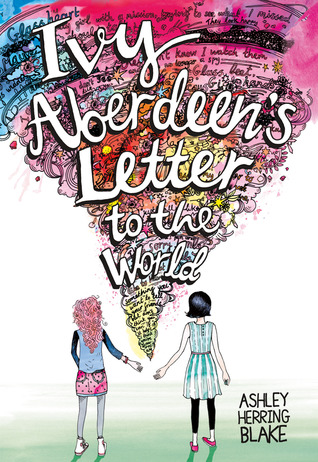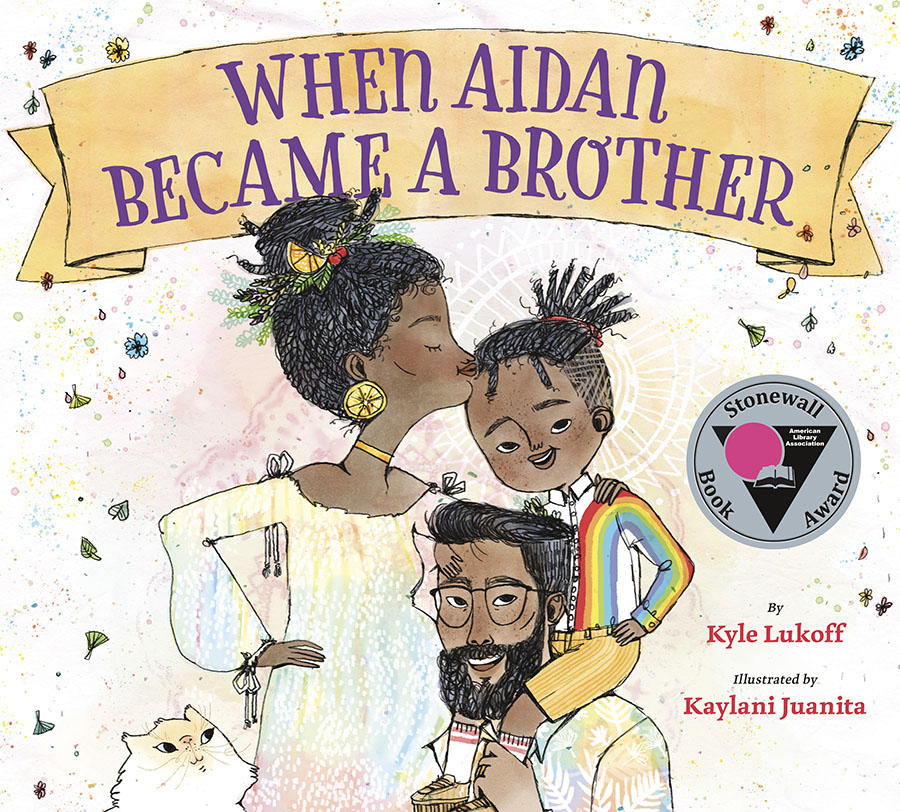Donna Bulatowicz, Montana State University, Billings, MT, and Desiree Cueto, Western Washington University, WA, with Gavin McCormick
 This series of WOW Currents, “A Long Time Coming,” centers on the progress made toward diversifying children’s literature and on the need to further this effort. In this final segment, we look at the evolution of LGBTQ+ books. The importance of authentic depictions in these books cannot be overemphasized, as Ellen Oh wrote on her blog, “Because queer kids are still killing themselves over being different (or being told that they’re different) and the greater representation they have in books, the less alone they’ll feel.”
This series of WOW Currents, “A Long Time Coming,” centers on the progress made toward diversifying children’s literature and on the need to further this effort. In this final segment, we look at the evolution of LGBTQ+ books. The importance of authentic depictions in these books cannot be overemphasized, as Ellen Oh wrote on her blog, “Because queer kids are still killing themselves over being different (or being told that they’re different) and the greater representation they have in books, the less alone they’ll feel.”
A 2017 Gallup telephone poll shows 4.5% of those who responded identify themselves as LGBTQ+ (Newport, 2018). Other surveys, including those done online, show a higher percentage of respondents identifying as LGBTQ+. However, for a variety of reasons, the LGBTQ+ population size is difficult to determine with certainty. Some people who are LGBTQ+ may not feel comfortable identifying themselves even on anonymous or confidential surveys; thus, surveys tend to show differing percentages of the population identifying as LGBTQ+.
Although representation in children’s books has improved in recent years, there are still far too few children’s books with LGBTQ+ main characters. In 2017, the Cooperative Children’s Book Center included information about LGBTQ+ books that they received. Only 65 out of about 3,700 books had LGBTQ+ main characters, the majority of which were young adult books (Tyner, 2018). With relatively little representation of LGBTQ+ people in children’s literature, along with sometimes limited access to LGBTQ+ inclusive books, LGBTQ+ students may not see themselves represented in many–if any–books. If they do encounter these books, the representations may be stereotypical or with animal characters instead of human characters.
Although authentic representations do exist, these books may prove challenging to find, especially since some librarians report that they do not purchase books with LGBTQ+ characters. For example, School Library Journal’s 2016 controversial books survey shows that about half of the elementary and middle school librarians who participated in the survey say they have decided not to purchase a book because the book has LGBTQ+ content (School Library Journal, 2016). Additionally, in GLSEN’s 2017 school climate survey, fewer than half of the middle and high school respondents report being able to find LGBTQ+ inclusive materials in their school libraries (Kosciw et al., 2018).
When students are finally introduced to LGBTQ+ literature, as a result of their own searches to find themselves in reflected in books, or much later, in college classes, they have mixed emotions. Many are shocked that the books actually exist, but also disappointed that such literature was withheld from them in school. This past winter, in Desiree’s Culturally Relevant Materials for Diverse Learners Course, the class read Ivy Aberdeen’s Letter to the World by Ashley Herring Blake. Gavin, this week’s featured student author, wrote that the book was transformative for him; had he read a book like this when he was in middle school, it might have been life changing. In Ivy Aberdeen’s Letter to the World, Ivy’s world is upended when a tornado destroys her home and she loses her secret notebook in the shelter. Her secret notebook had drawings of Ivy holding hands with another girl. Ivy discovers self-acceptance, forges new friendships and learns compassion for self and others in this engaging book.

While Gavin made a personal connection with the character, Ivy, as the quarter went on and he became familiar with a broader set of books that reflect the LGBTQIA+ community, he was disheartened. For one thing, all of the books that were supposed to represent queer boys focused on characters who wanted to wear sparkly clothes (Sparkle Boy) or male characters who liked things that have typically been assigned to female characters like dolls (William’s Doll), dresses (Morris Micklewhite and the Tangerine Dress), jewelry (Big Bob, Little Bob) or animals (And Tango Makes Three). While these books may be important in that they promote acceptance and inclusion, children also need to read books that speak specifically to gender diversity. Gavin stated that not all queer boys have effeminate mannerisms or wear feminine-assigned clothing. One of the few picture books that dealt directly with gender in ways that Gavin felt were authentic was When Aidan Became a Brother by Jonathan Lukoff. In this book, a young transgender boy named Aidan finds out that his parents are having a baby. This brings up memories for Aidan of when he was younger; people assume he is a different gender based on what he was assigned at birth. In the book, he doesn’t want the baby to feel as he did and worries about making mistakes. His parents reassure him as they prepare for the baby’s arrival.
A Message to Classroom Teachers and Librarians: In his final reflection Gavin shares, “I spent a significant amount of time reflecting on my own personal experiences as a queer male and trying to pin down exactly what facets of my lived experience are universal and noteworthy for children’s literature. In taking the time to reflect on my youth in the closet as a queer child, being bullied for being queer, and being told I’m ‘too gay,’ I learned that male queerness is not one static identity category. It is multifaceted, ever-changing, and most importantly: worthy of incorporating authentically in children’s literature. Books like these need to be in schools!”
References:
Kosciw, J.G., Greytak, E. A., Zongrone, A.D., Clark, C.M., & Truong, N.L. (2018). The 2017 National School Climate Survey. GLSEN. https://www.glsen.org/sites/default/files/2019-10/GLSEN-2017-National-School-Climate-Survey-NSCS-Full-Report.pdf
Newport, F. (2018). In U.S., estimate of LGBT population rises to 4.5%. Gallup. https://news.gallup.com/poll/234863/estimate-lgbt-population-rises.aspx
School Library Journal (2016). Controversial books survey. https://s3.amazonaws.com/WebVault/SLJ/SLJ_ControversialBooksSurveyReport_2016.pdf
Tyner, M. (2018). The CCBC’s diversity statistics: Spotlight on LGBTQ+ stories. Horn Book. https://www.hbook.com/?detailStory=ccbcs-diversity-statistics-spotlight-lgbtq-stories
Children’s Literature Reference:
Baldacchino, C., & Malenfant, I. (2014). Morris Micklewhite and the tangerine dress. Toronto: Groundwood Books.
Blake, A. H. (2019). Ivy Aberdeen’s letter to the world. New York. Thorndike Press
Howe, J., & Anderson, L. E. (2016). Big Bob, Little Bob. London: Walker Books
Lukoff, K., & Juanita, K. (2019). When Aidan Became a Brother. New York: Lee & Low Books Inc.
Newman, L., & Mola, M. (2017). Sparkle boy. New York: Lee & Low Books Inc.
Richardson, Parnell, Cole & Harris (2005) And Tango makes three. New York: Simon & Schuster Books for Young Readers.
Zolotow, C. & Pène, B. W. (1972). William’s doll. New York: Harper & Row.
Journey through Worlds of Words during our open reading hours: Monday-Friday, 9 a.m. to 5 p.m. and Saturday, 9 a.m. to 1 p.m. To view our complete offerings of WOW Currents, please visit its archival stream.
